 |
surfresearch.com.au
glossary
: r
|
| home | catalogue | history | references | appendix |
|
|
|
|
|
|
|
|
|
|
|
|
|
|
|
|
|
|
|
|
|
|
|
|
|
|
|
|
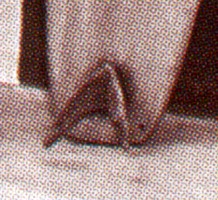 |
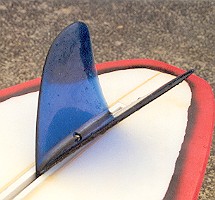 |
| rails
the left and right edges of the board’s template, usually described in cross –section. Attempt to illustrate rail profile. Zenith Surfboard, shaped by Avalon's Lee Riley, circa 1974. |
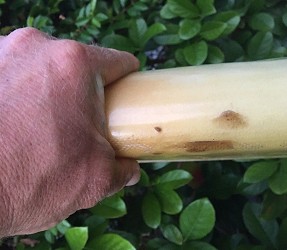 |
| rail saver 6” webbing strap between board and leg rope that prevents rope snagging around fin and seriously damaging the rail of the board. First use 1977. Initially these were marketed as an extra to prevent the rope twisting around the fin and biting into the rail. By the 1980s, commercial leg-ropes came fitted with a rail saver. Rail Saver by Sure Surf Supplies
PO Box 85 Torquay 3228 $2.00 by post. Tracks, September 1977, page 29. 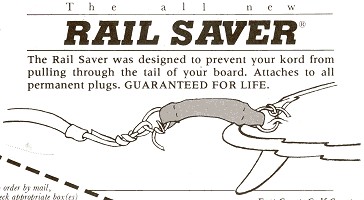 Kong Cord by Newport Surf and
Sport, California.
Surfing, April - May 1978, Volume 14 Number 2, page 12 |
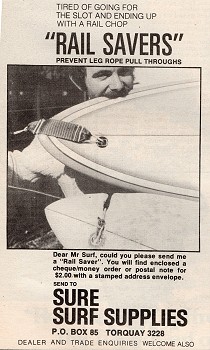 |
| registration sticker /
Surf Permit : See Surf Permit A circular vinyl sticker usually white and one colour, to indicate the year. Printed text includes the council area and year validated by an individually stamped serial number. These were issued by Sydney beach side councils 1962 – 1968 as a reaction to public concerns about safety. A similar system was in use in the US at this time. Valid only for the beaches of the issuing council and policed by beach inspectors and surf club members (sometimes resulting in confiscation), the system was reviled by boardriders. Perversely, the stickers are now highly prized by surfboard collectors and modern reproductions are available. While an original registration sticker may not strictly indicate the year of a board's production (it may be somewhat earlier) importantly for research purposes, it obviously cannot be later. Since the registration was only valid for one summer, riders would often remove the previous year's sticker and replace it with the current one. |
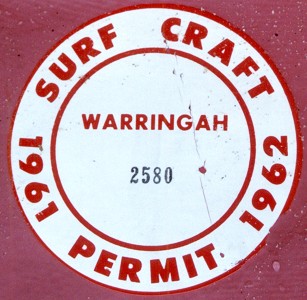 Warringah 1961-1962 |

For example James Kinstle in Surfboard
Design
and Construction, 1975 pages 47 to 49, notes...
Since most surfboards have
little or no rocker or lift int he tail, it is a good idea
to use the tail as a primary point of reference.
Moving from the tail along the
bottom center line, the rocker curve will deviate away from
a straight line as it curves upward toward the nose.
This may be of use for a small
proportion of surfboards, but is generally next to useless.
In fairness, he does qualify this ...
Some surfboards have so much
lift in the tail that by the time you get to the nose,
deviations away from the straight edge are so large
that is almost impossible to measure them.
However, the proposed solution is not
much better...
In cases like this, choose a
primary reference point that is two feet from the tail and
hold a straight edge against the bottom at that point.
See also banana, camber, lift,
scoop, spoon,
And
http://hosted.verticalresponse.com/235086/6c4116f4ac/441000351/8f0221997c/
|
Photograph : Aitionn or Bob Cooper Collection. Australian Surfers Journal Volume 3 Number Two, Autumn 2000. Page 75. |
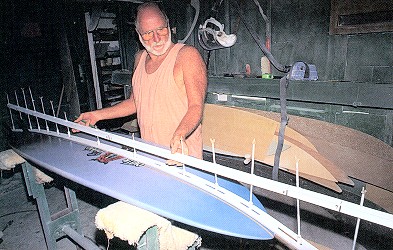 |

|
|
|
|
|
|
|
|
|
|
|
|
|
|
|
|
|
|
|
|
|
|
|
|
|
|
|
| home | catalogue | history | references | appendix |